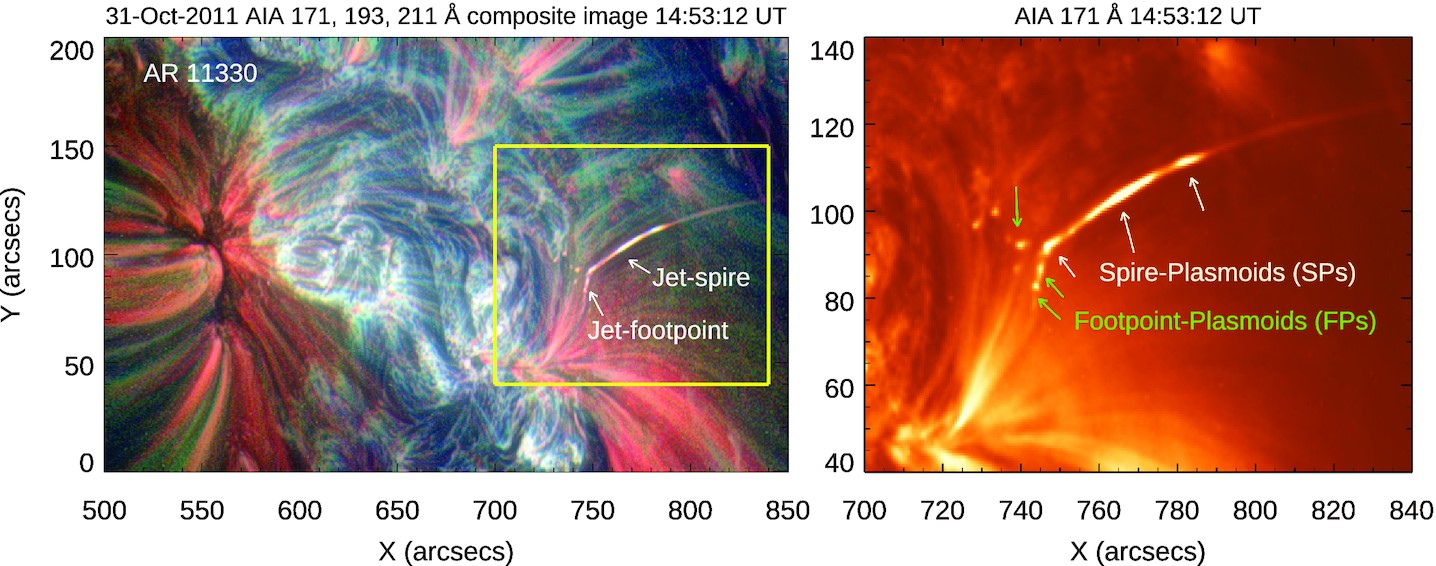Formation and thermodynamic evolution of plasmoids in active region jets
Abstract
We have carried out a comprehensive study of the temperature structure of plasmoids, which successively occurred in recurrent active region jets. The multithermal plasmoids were seen to be travelling along the multithreaded spire as well as at the footpoint region in the EUV/UV images recorded by the Atmospheric Imaging Assembly (AIA). The differential emission measure (DEM) analysis was performed using EUV AIA images, and the high-temperature part of the DEM was constrained by combining X-ray images from the X-ray telescope (XRT/Hinode). We observed a systematic rise and fall in brightness, electron number densities and the peak temperatures of the spire plasmoid during its propagation along the jet. The plasmoids at the footpoint (FPs) (1.0-2.5 MK) and plasmoids at the spire (SPs) (1.0-2.24 MK) were found to have similar peak temperatures, whereas the FPs have higher DEM weighted temperatures (2.2-5.7 MK) than the SPs (1.3-3.0 MK). A lower limit to the electron number densities of plasmoids - SPs (FPs) were obtained that ranged between 3.4-6.1 × 108 (3.3-5.9 × 108) cm-3 whereas for the spire, it ranged from 2.6-3.2 × 108 cm-3. Our analysis shows that the emission of these plasmoids starts close to the base of the jet(s), where we believe that a strong current interface is formed. This suggests that the blobs are plasmoids induced by a tearing-mode instability.
- Publication:
-
Monthly Notices of the Royal Astronomical Society
- Pub Date:
- January 2023
- DOI:
- arXiv:
- arXiv:2211.01740
- Bibcode:
- 2023MNRAS.518.2287M
- Keywords:
-
- Sun: activity;
- Sun: atmosphere;
- Sun: corona;
- Sun: evolution;
- Sun: UV radiation;
- Sun: X-rays;
- gamma-rays;
- Astrophysics - Solar and Stellar Astrophysics;
- Astrophysics - High Energy Astrophysical Phenomena;
- Physics - Plasma Physics
- E-Print:
- 13 pages, 10 figures, Accepted for publication in Monthly Notices of the Royal Astronomical Society
